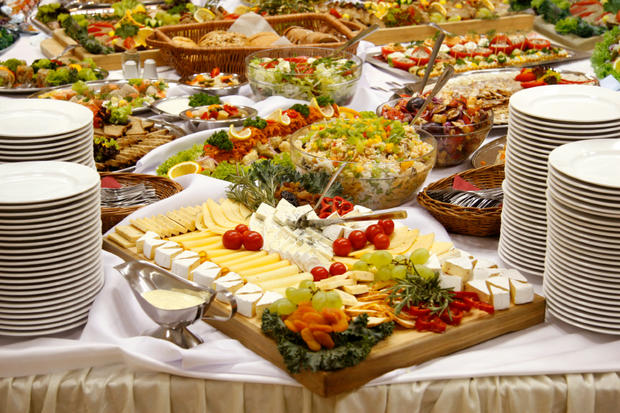
Few other things can give the same sense of satisfaction to a homemaker, as cooking up a healthy meal for your family (and yourself of course!). More so, in current times when we have an ever-growing list of great-tasting yet unhealthy fast-food options available, just a phone call away. So we read up all recipes for healthy meal options, exchange them with friends and set out to prepare a wholesome meal for our family. Despite taking all the care, there are some important things we miss out on. Here are the 10 common mistakes that we unknowingly make while cooking a healthy meal:
1. Cutting vegetables immediately before cooking them
In our enthusiasm to eat and make fresh food, some of us tend to chop the vegetables right before cooking them. However, in case of many vegetable (like cabbage, broccoli, onions, and many more) it is advisable to keep the chopped vegetables aside for some time before putting them on flame. Reason being that cutting of vegetables, initiates certain reactions within them which result in creating some healthy substances. Thus waiting a while (10-15 mins), would help in completion of these reactions resulting in maximum health benefits.
2. Cutting vegetable too long before preparing food
This one is the other extreme. If we keep too much time between cutting the vegetables and cooking them, chances are they will lose most of their nutrients due to oxidization. Since cutting the vegetables increases the surface area, oxidization takes place ripping the food of its nutrient value.
3. Removing the peel of fruits and vegetable prior to eating them
It’s just a matter of habit, and giving too much importance to taste buds. A large number of nutrients in fruits and vegetable are in their skin or just below it. So removing that peel will rob away most of the benefits of consuming the fruit/vegetable. Most fruit-peels are edible and don’t affect the taste much, so this one mistake we must avoid by all means.
4. Boiling vegetables
Boiling always comes across as a simple, quick and convenient method of cooking vegetables. But this results in loss of all water-soluble nutrients. Instead, we could try steaming, stir-frying and similar such methods of cooking which are time-saving yet preserve the nutrients. In case boiling is absolutely essential, we must ensure that we use the water used for boiling in some other dish (e.g in soup), to get some benefit of the lost nutrients.
5. Adding oil to the water for boiling pasta
We’ve heard this ‘tip’ from many of our friends – that we must add a little oil to the water used while boiling pasta, to prevent them from sticking together. This, however doesn’t hold true. On the one hand the oil doesn’t prevent sticking in any way, and on the other it interferes in other sauces adhering to the pasta later. Taking a bigger cooking vessel and stirring with a fork occasionally, are our best bet to prevent that ‘sticky business’!
6. Overcooking food
Sure there are certain foods which could lead to a ‘tummy-ache’ if not cooked well – chicken and fish for example. But not our good old vegetables – they not only lose their taste and color when overcooked, but also more than half of their nutrients. The best indicator for checking the optimal cooking time for a vegetable, is its color – any vegetable starts losing color if overcooked.
7. Replacing other cooking mediums with olive oil
Since the last few years, olive oil seems to be the new ‘mantra’ for healthy cooking. So all our other cooking oils (sunflower, groundnut, etc) are shown the door and replaced by olive oil in most health-conscious homes. The fact is that olive oil loses most of it’s nutrients when cooked at high temperatures (required for most of our cooking) even for few minutes. A better alternative could be using broth for sauteing the vegetables and then sprinkling in some oil before serving.
8. Sparingly seasoning the food
Though we are tempted to toss in that spoonful of butter to make our food yummier, it’s a complete no-no for cooking a healthy meal. Instead, we can count on the various herbs, spices and other seasoning (like, oregano, mint, clove, etc) to further enhance the flavor of our food. These not only add zing to our food, but also enrich it with their widely-know health benefits (clove, cinnamon and ginger keep cold at bay). So be generous in use of seasoning for your healthy platter.
9. Charring vegetables and meat
Many of us relish the slightly ‘burnt’ taste of grilled food, however, it cannot be considered a healthy eating practice. Though grilling is a healthy cooking method, but we must ensure it is done optimally to prevent burning or charring of vegetables/meat. This leads to loss of all nutrients and in many cases produces harmful free radicals.
10. Not washing fruits/vegetables carefully enough
Since our growing up years we are taught to wash our fruits and vegetables well before consuming them. Though most of us carefully wash the fruits that are eaten whole (apple, pear, etc.), we tend to be careless in case of others which are eaten after removing the peel, or cutting (in case of vegetables). We must understand that the bacteria and pesticides on the outside of food can easily get transferred inside while peeling or cutting them.



